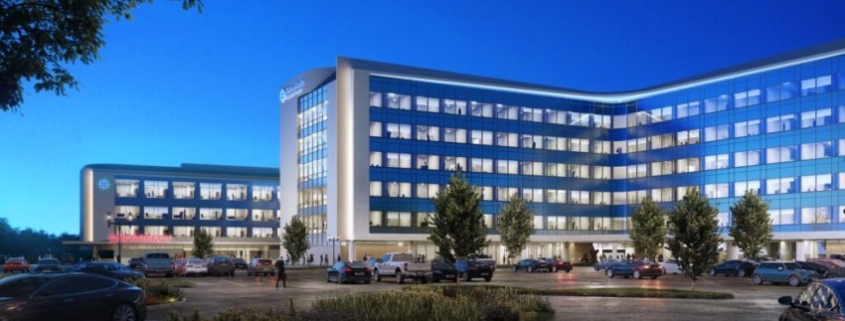The new health center will provide residents in southern Dallas County access to a variety of preventive vital health services close to home when it opens in September 2021.
“Guided by Bank of America’s commitment to helping our communities move forward, we deeply appreciate the opportunity to partner with Parkland and the RedBird Health Center,” said Jennifer Chandler, Bank of America Dallas President. “We understand the persisting challenges many areas of our city face in accessing quality healthcare, including southern Dallas County, and we are honored to play a part in this project and support Parkland’s mission to serve the most vulnerable in our community.”
As the population grows in Dallas County, there has been a disproportionate growth in the number of vulnerable populations and, in turn, an increase in the need for affordable, accessible health services. Parkland’s most recent Community Health Needs Assessment (CHNA) found that disparities in access to medical care are contributing to a nearly 25-year gap between ZIP codes with the highest and lowest life expectancies.
The CHNA further indicates there is also a geographic divide, with our neighbors in southern Dallas County being underserved by existing healthcare services needed to get healthy and stay healthy. A high percentage of patients from these ZIP codes come to Parkland’s emergency department for basic primary care, need specialized care to manage their diabetes and associated complications, and require life-saving cancer treatment at later stages because they did not have access to screenings and early intervention to treat the disease.
Fighting The Inequities In Healthcare
“Today in Dallas County your ZIP code is a better predictor of health than your genetic code,” said Christina Mintner, Senior Vice President Of Population Health At Parkland. “We believe that where you live should not define how long and how well you live. That’s why we’re building the new RedBird Health Center in the heart of southern Dallas County, to fight the inequities in healthcare.”
Located at U.S. Route 67 and Interstate 20 in the award-winning Reimagine RedBird development, the new 40,000 square-foot health center will provide care close to home with services including adult and geriatric primary care, specialty care for women, behavioral health, breast cancer screenings, a pharmacy, social work, physical medicine and rehabilitation, and other services targeted to the specific health needs of the residents in the Red Bird area.
The health center will further address transportation barriers by including the technology needed to provide virtual methods of care such as telehealth, e-consults and virtual shared medical appointments.
Projections indicate that once fully staffed, the new RedBird Health Center will provide 18,000 preventive and primary care visits each year and 23,000 women’s specialty health visits each year for people living in southern Dallas County, including Duncanville, DeSoto and Cedar Hill.
‘A Beacon of Hope For Our Neighbors In Southern Dallas County’
“We are grateful to Bank of America for their generous grant in support of our mission to provide equitable access to healthcare for everyone in our community,” said Michael A. Horne, EdD, MPP, President and CEO, Parkland Foundation. “The new RedBird Health Center will serve as a beacon of hope for our neighbors in southern Dallas County. Donor support is critical to helping Parkland provide comprehensive health services close to home. Thank you, Bank of America, for standing for Parkland and providing an opportunity for all residents to live healthy, active lives.”
Donors contributing $100,000 or more to support construction of the new RedBird Health Center include Amazon, Anonymous, Bank of America and The Pollock Foundation. To learn more about the new RedBird Health Center or to make a gift, please contact Parkland Foundation at 214-266-2000 or visit www.IStandforParkland.org.
About Parkland Foundation
Parkland Foundation is dedicated to securing substantial financial resources that advance the goals of Parkland Health & Hospital System. Through this support, Parkland is able to extend its services to reach more people in need and enhance the quality of care available to them. Learn more at www.IStandforParkland.org.
Source: Focus Daily News





